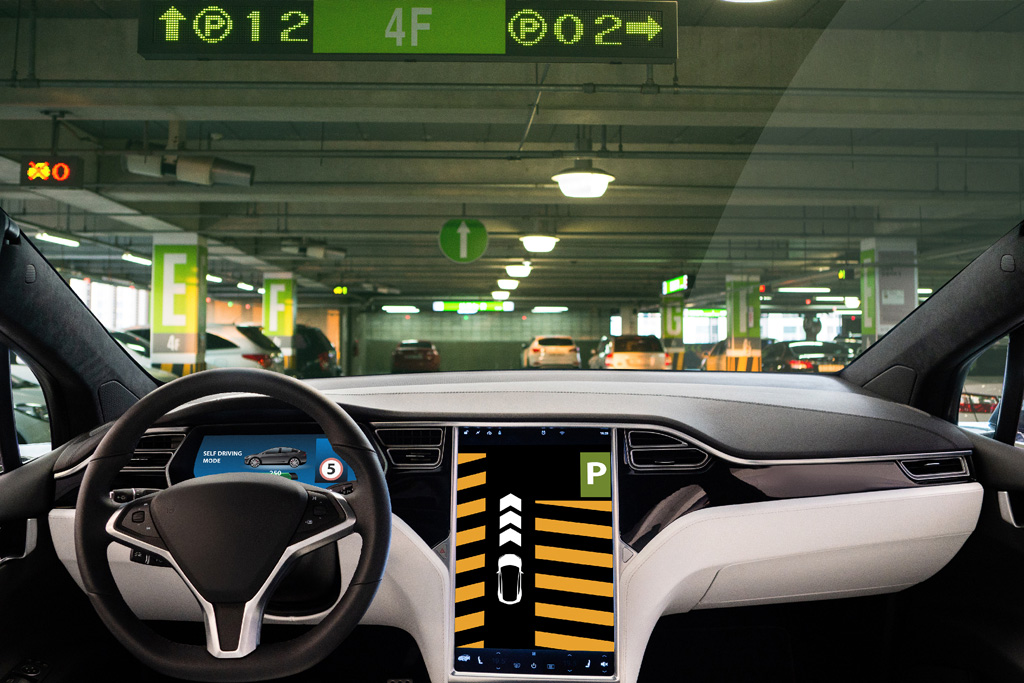The Future of Parking Guidance is Smart and Simple
By Chris Scheppmann
Parking guidance is one of the most important technologies to emerge in recent years. The initial appeal of the technology is that it dramatically improved the parking experience while, at the same time, helping to maximize parking occupancy and improve management. Drivers benefit by not having to waste valuable time searching for a parking space.
Parking guidance also benefits owners and parking organizations by providing essential data. When parking owners and managers have access to real time data about how their parking facilities are being utilized, whether they are at full or near-full capacity, and when they tend to be busiest, they can make better decisions about how to manage those parking resources. Better and more comprehensive information tends to lead to better management decisions. It easy to see how parking guidance offers a classic win/win scenario: drivers get a better parking experience, while parking owners improve their operations and make more money.
And with the impending dawn of the Smart City age and the eventual introduction of self-driving vehicles, parking guidance will become all the more important. It will be the key technology for the success of smart cities because by guiding drivers directly to available parking, it can significantly minimize travel times and reduce roadway congestion. Some cities in the United States are already connecting the parking guidance networks of private parking facilities to their municipal grids to create city-wide guidance networks, and that will soon be the norm in cities across Canada, as well.
Intelligent Simplicity
Everyone loves the concept of parking guidance, but in the past, many owners have been scared away by the cost. When the technology was introduced, owners had just two options: install sensors over every parking stall at considerable expense, or use less expensive technology that was often inaccurate and, as a result, not particularly useful. A complete over-the-space sensor system could cost anywhere from $500 to $750 per space, given infrastructure limitations and signage requirements. So, for a garage with just 500 parking spaces, the cost of installing a reliable guidance system would run around $250,000 and could run as high as $375,000. And that’s just the initial installation cost. There may also be maintenance and repair costs to factor in.
Now, however, owners and parking organizations can take a more streamlined, simple approach to parking guidance. A simplified parking guidance system that leverages the latest advancements in vison-based software technology to track, identify, and count cars, can provide accurate guidance at a fraction of the cost. The software can recognize the difference between specific objects, such as cars, people, motorcycles, scooters, and precisely count only those vehicles that will be parked. Intelligent Cameras are located at the main entries, entrances, and exits of individual parking floors, and even specific zones to monitor incoming and outgoing traffic. The cameras count how many cars enter and exit the parkade, as well as each individual floor. That data is compiled and analyzed in real time to determine how many spaces are available in the parkade as a whole, as well as on each floor.
The data is then transmitted to strategically located LED signs located at the parkade’s entrance and at the entrance of each floor. When people drive into the parkade, the entry sign tells them how many parking spaces are available at that moment throughout the facility. As they drive through the parkade, signs at each level tell them how many spaces are available on that particular level at that moment.
For larger parkades, it may be advisable to install additional cameras and signs to serve individual sections of a parking floor to provide more detailed information about how much parking is available in those sections. The system is also scalable to allow for the strategic individual monitoring of specialty parking spots such as ADA, Short Term Drop off, or VIP Rewards spaces.
This simpler approach to parking guidance can provide a much more convenient parking experience at a fraction of the cost of single space parking guidance. It’s easy to see why the cost is much more manageable, since owners and operators only have to install a handful of cameras rather than hundreds of sensors. The technology can also be connected to cities’ grids, so municipal managers can tell at a moment’s notice how many spaces are available throughout the city or in individual parkade’s at a given time. So, as the evolution of smart cities continues, this type of connected technology will be essential.
Like other forms of parking guidance, the systems also provide valuable information that can be used to better manage parking resources. The data is collected and transmitted to a cloud-based management portal. Live garage metrics and reporting tools are accessible anytime, anywhere, from mobile device, tablet, or computer. Administrators can visualize how many cars park in their parking facilities every day, which sections of the parkade are most popular with patrons, and which hours and days are busiest. This information can be used to appropriately set parking rates and inform marketing efforts. When you know how your parking resources are being used, you can make better decisions about how to manage those resources. Parking guidance technology provides that information.
Guidance in Reach
Parking guidance technology is a valuable tool for helping provide a better parking experience, while at the same time improving parking operations. And as we continue to develop smart cities, it will be a key component of municipal transportation strategies. And for those owners and parking organizations that have avoided investing in the technology because of the expense, the simpler, streamlined approach may provide the answer because it is much less expensive, more manageable, and provides parkers enough information to make smarter parking decisions. Simple guidance is the next step in the evolution of parking guidance technology.






